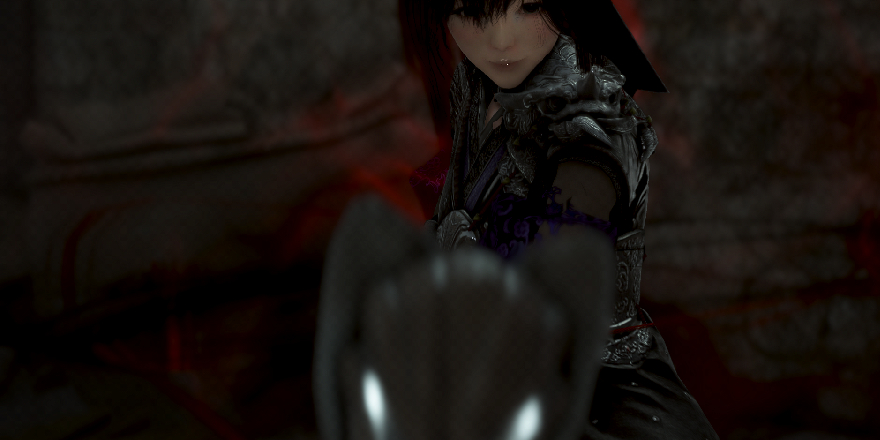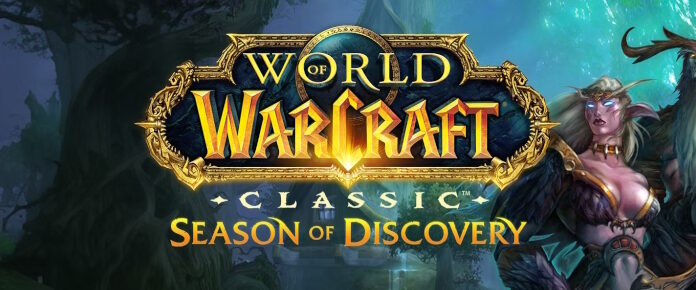
One of my favorite MMO stories is how I got into Black Desert in the first place. It was right after I tried out Final Fantasy XIV’s Eureka. I was excited for the game mode but was disappointed when I finally had a chance to play. I gave it for about three days, but I wasn’t a huge fan of partying up and grinding the boss monsters for hours. (It actually looks like our FFXIV columnist Eliot even agreed with that sentiment.) Despite my disappointment, I soon realized this kind of grind was missing in my life, so I started looking.
Since I already played “the big four,” I wanted a change of pace, so I looked eastward: the domain of Blade & Soul, TERA, Black Desert, and ArcheAge. I initially settled on Blade & Soul and Black Desert, but in the end my time (and money) went to Black Desert for three reasons: I wanted to be a dark knight, it had the nicer engine, and it was a sandbox, a genre I never really tried.
I was in good company too. People often ask which of these two games is most worthy their time, given that they’re among the larger and newer and shinier Korean imports. So what better opportunity than today to consider a deep, holistic, comparison between the two games? I plan on making this a two-part series. For today, we’ll just cover the different design philosophies. And as with my criticism of Black Desert’s RNG system, I’m not going to give a “winner” per se, but I’ll recommend the type of player that might like this particular component.
In our team’s last Overthinking article, I alluded to the esoteric nature of these games. Only a certain kind of player will play grind-centric titles. But if you’re the type of player that wants a change of pace from “the big four,” they’re great options. I’m also going to take several liberties: If you’re seriously considering picking between these games, I’m assuming you know at least a little of what you’re getting yourself into. Whichever game you choose, be ready to grind, spend money for a form of progress, and endure lots of randomness.
Black Desert’s design philosophy
This game is a sandbox. There are very few instanced areas in this game, and this game does not focus on merely grinding dungeons over and over again. Players earn their levels and money from grinding mobs, daily quests, and daily experience boosts. Players go to their favorite grind spot and farm. New content usually comes in the form of more grind spots and regions rather than a set of new dungeons. The dungeons Pearl Abyss does include are usually public dungeons too, but they’re more like underground grind spots more than anything.
The game designs everything around this form of grinding, with biweekly events usually having some form of “kill monsters for this special item” component. There’s open PvP, of course, and players are either expected to fight over the spot or move to another server. I went into detail on how servers worked in my last article, but the short version is that moving servers in this game is an easy process. You can switch every 15 minutes, and there are a lot of shards of the gameworld, so those who don’t want to PvP can at least leave.
A central tenet to this game’s design is the hope that you’ll never be logging out of the darn thing. There are myriad jobs that can be done away from the keyboard. I’ve previously covered BDO’s fishing system, but there’s also setting up the worker empire, crafting, building boats, and horse training. Heck, people can even grind levels without actually being in front of the game.
Black Desert is probably best known for its graphics, so players looking for a truly pretty game should give this game a try. In a nod to western aesthetics, the game has really made it a point to show off how shiny armor can get with last year’s Remastered patch. Major cities have a distinct European look, and those who enjoyed an eastern interpretation of the west (akin to Dark Souls) will enjoy the setting.
Blade & Soul’s design philosophy
In contrast, Blade & Soul employs the distinct wuxia style. For those not in the know, the wuxia period is to China what the medieval time period is to Europe. It’s essentially their fantasy genre. This game is so colorful; animations create a water-like smoothness to character movements. This was much more unfamiliar territory for me personally – not at all a bad thing! – and those looking for something that isn’t in a stereotypical western fantasy setting will enjoy the feel and look of this.
Insofar as how it’s structured, B&S has much more in common with a themepark like World of Warcraft than with BDO, but it’s not exactly the same. There are instanced dungeons, but they’re nowhere near as long; in fact, some of the early dungeons I’ve been to are pretty short. They’re only about two or three rooms big, so people might even think it’s a miniature story instance. The dungeons are much more like FFXIV’s Heavensward raids with a small group of trash and a major boss battle in the end. This game does have an interesting tower mode too that I wish Black Desert had. (I’ll go into this in depth in the next article.) I haven’t personally played much of this mode, but it’s basically a tower for one-on-one boss battles.
Players also need to be aware that there are two control schemes for this game. The first is the quintessential action combat mode, where the game controls like a third-person action game. The second is classic mode, which plays like WoW with modifications to accommodate for the action combat. This is a big thing for me since I play better this way; as a dedicated tank player, I like keeping my eyes open to changes in the battlefield.
Overall, I’d say that Blade & Soul feels much more familiar to the traditional MMO player than Black Desert. This game is a themepark MMO with the trinity. The tank, damage dealer, and healer roles are present. [Edit: it turns out while there is a tank and dps role, there are no dedicated healers.– Thanks Jon-Enee!] Bosses have mechanics, so tells have to be dodged, mechanics must be handled, and DPS checks must be met. Black Desert is much lighter on these types of mechanics, so if you like tough, well-choreographed boss fights, go for B&S. That’s why I’d say that Blade & Soul is more for those who still want a familiar experience in a different setting.
The design philosophy might be enough for some players to make a decision, but there’s still so much more to cover! Join me in my next article where I’ll analyze the combat system of each game and what they do with it! Also please let me know in the comments what you’d like me to look into for comparison’s sake – or if you want me to compare Black Desert with another game!
 The Great Valencian Black Desert is a dangerous place, but thankfully there’s always a chance for respite. Join Massively OP’s Carlo Lacsina every other week for just that in Desert Oasis, our Black Desert column! And don’t worry; he promises he won’t PK you. Got questions or comments? Please don’t hesitate to send a message!
The Great Valencian Black Desert is a dangerous place, but thankfully there’s always a chance for respite. Join Massively OP’s Carlo Lacsina every other week for just that in Desert Oasis, our Black Desert column! And don’t worry; he promises he won’t PK you. Got questions or comments? Please don’t hesitate to send a message!
















